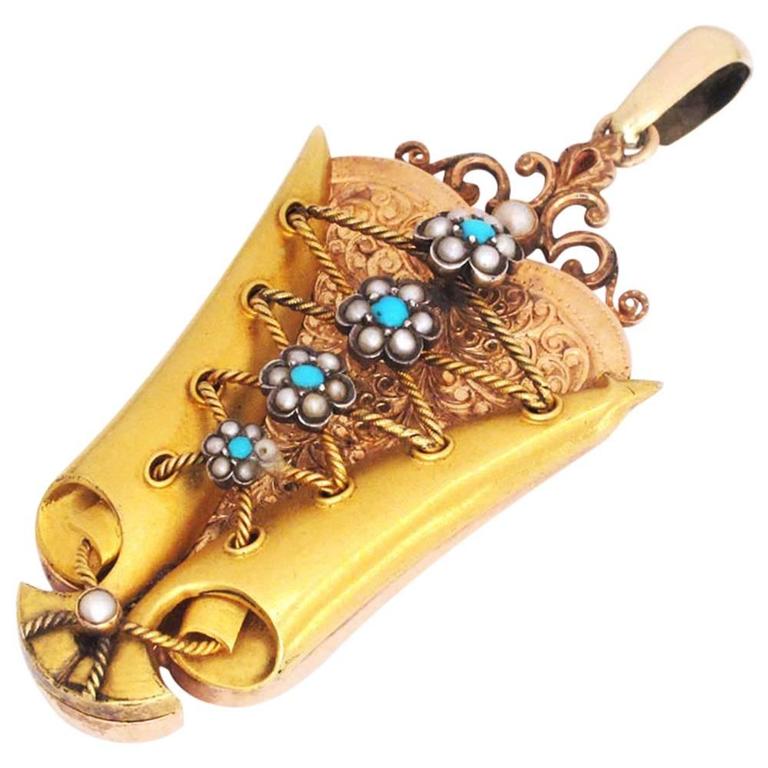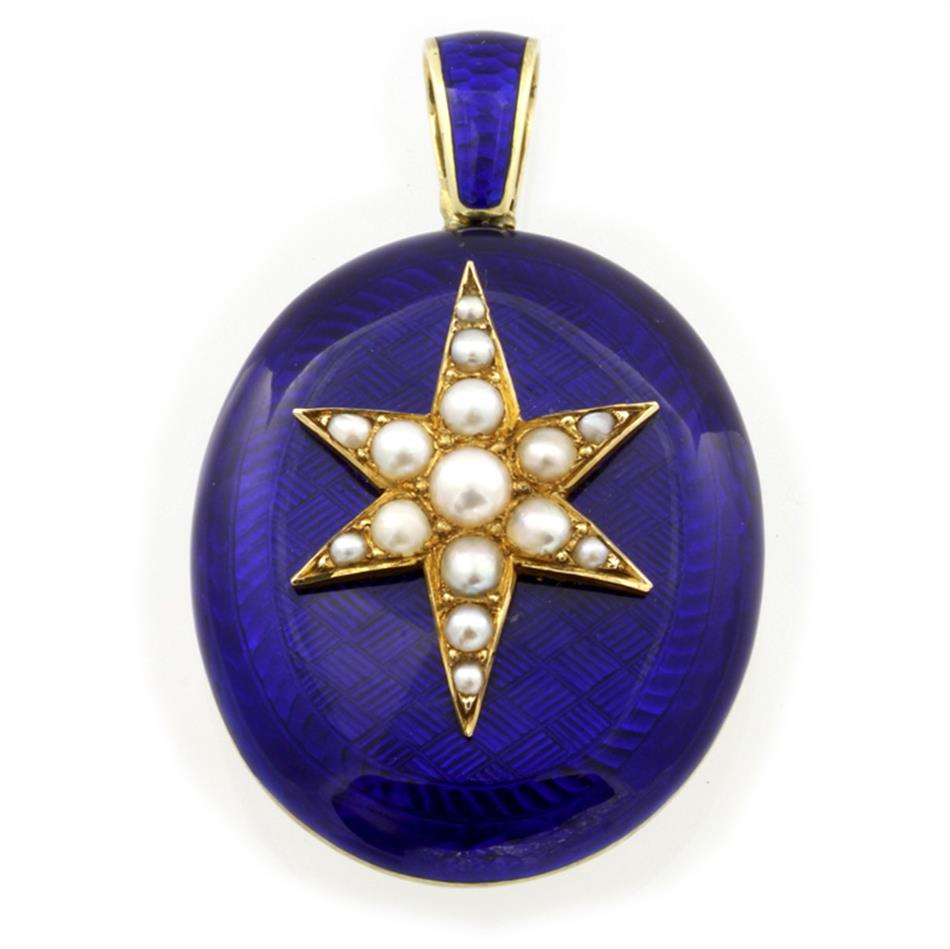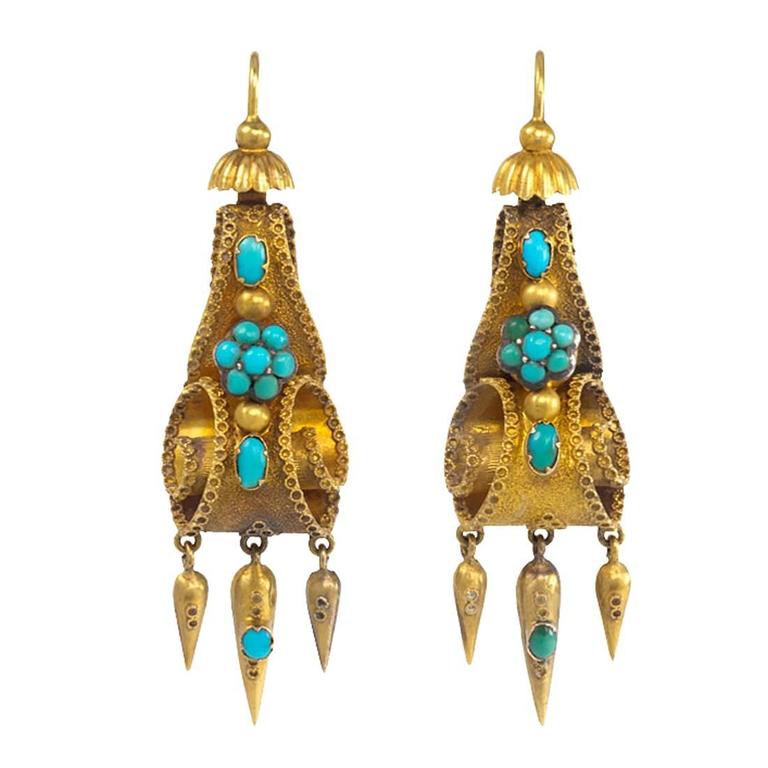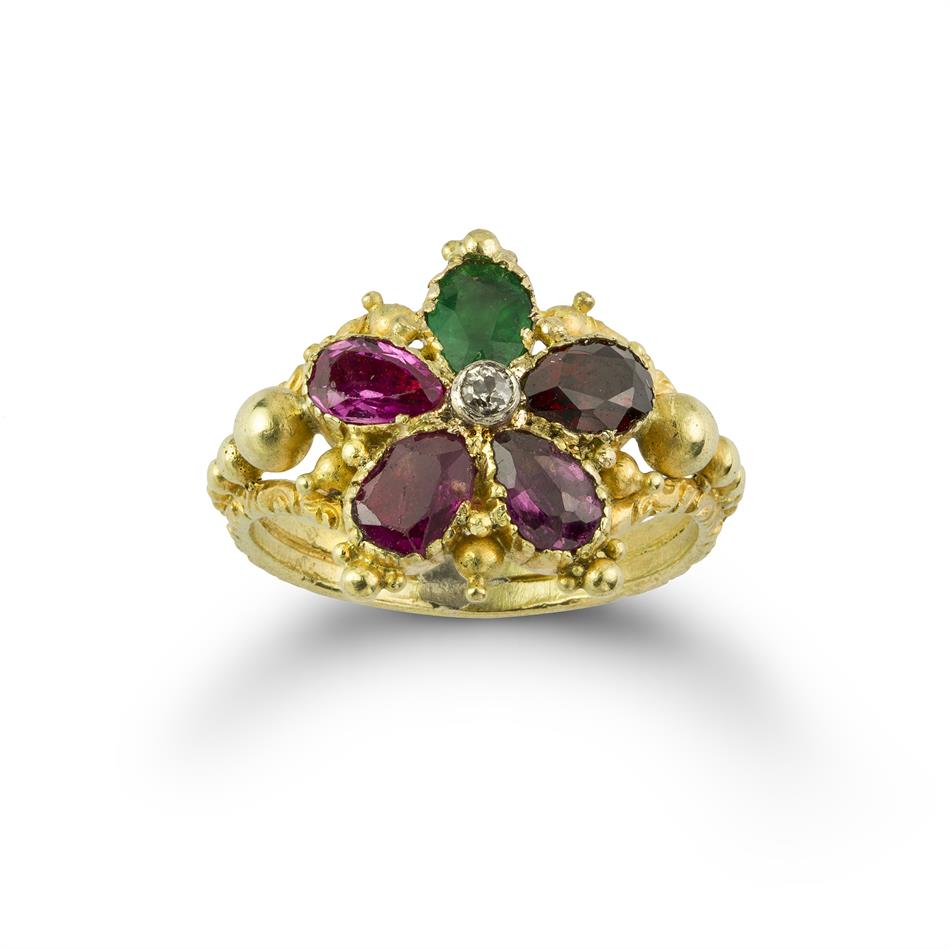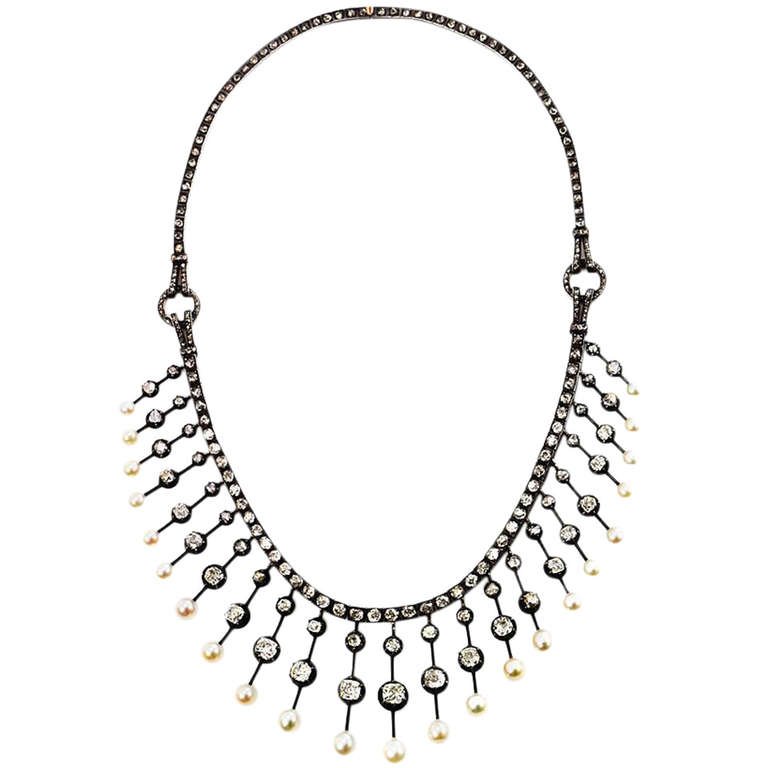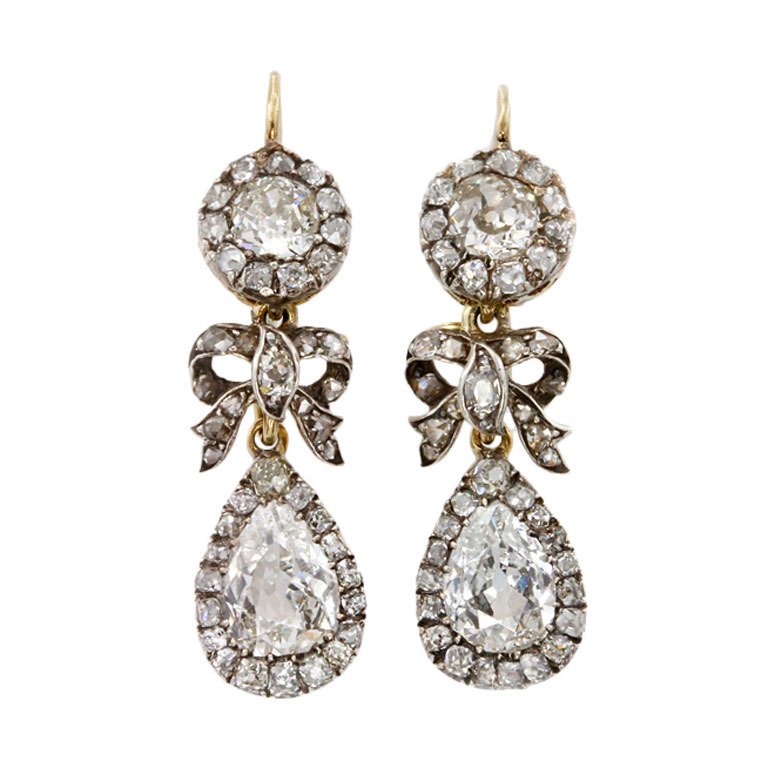Will PBS’ Victoria be true to the jewelry of the period and the popular trends during the real life Queen’s Reign?
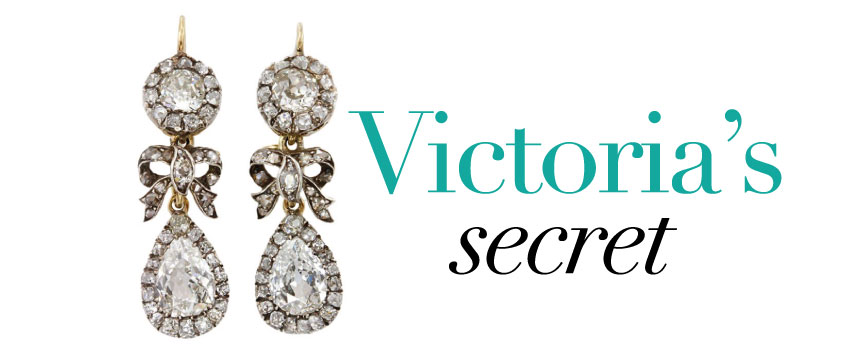
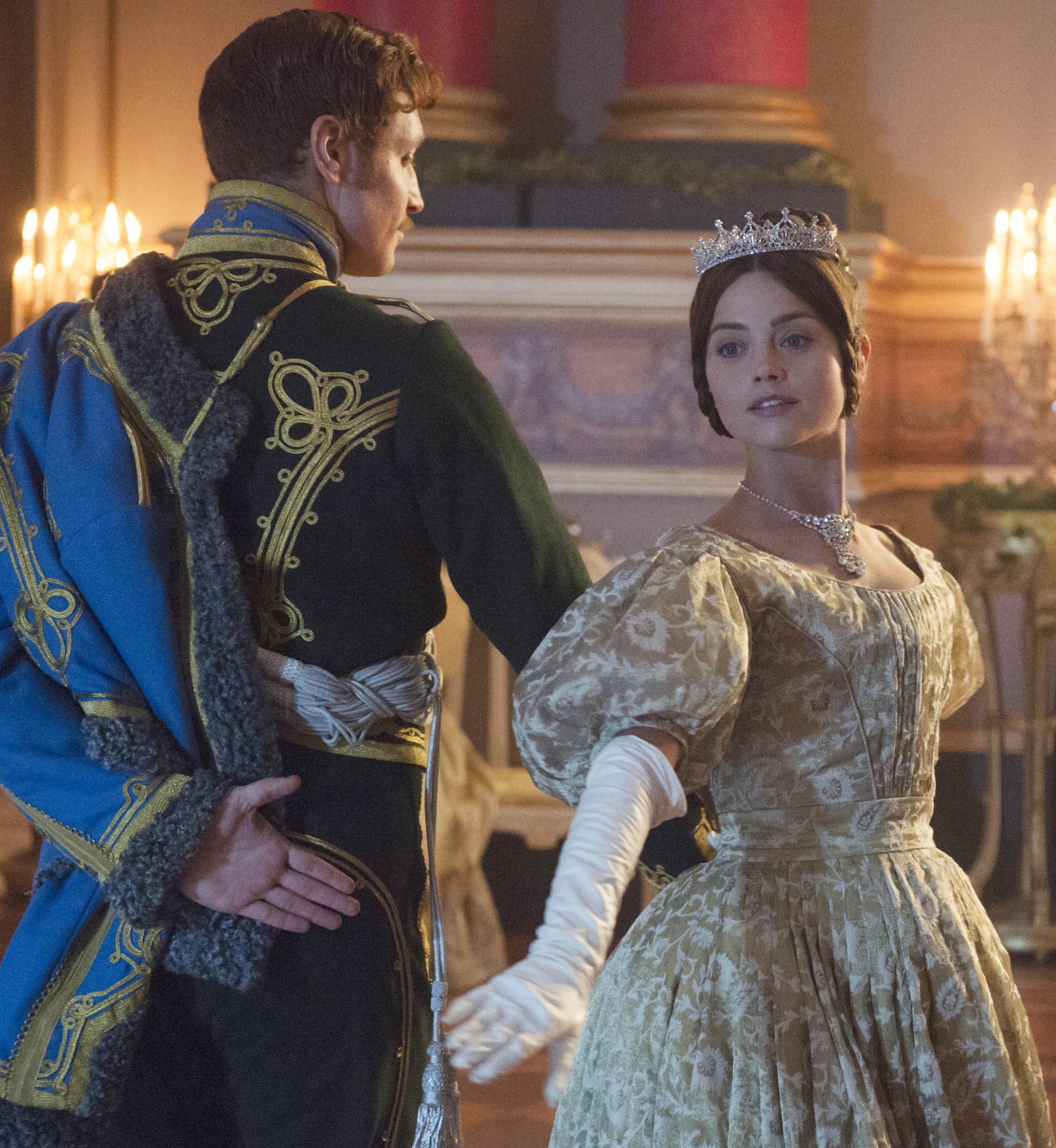
Photo by ITV/REX/Shutterstock Jenna Coleman as Victoria. ‘Victoria’ TV show, series
After the first eight episodes launched in the UK in 2016, Victoria debut on PBS two nights ago on Jan 15th, and has a big time slot to fill, that of Sunday evening’s Downton Abbey. Fans tuned in for the juicy story lines, romances and Maggie Smith’s zingers as much as they did for the fashion and jewelry trends as we went through the various time periods and three costume designers during the six seasons of the upstairs/downstairs series.
Whether or not the true-to-life drama of Victoria with script written by Daisy Goodwin, informed by Queen Victoria’s own diaries and starring Jenna Coleman will be up to the challenge has yet to be seen as far as the story line. But let’s talk about the jewelry for a moment. The first episode portraits Victoria at 18, on the morning after the death of her uncle, King William IV and takes us through her young ascendance to the thrown in 1837. We first see her in delicate youthful jewelry and later in a bolder statement necklace and her coronation crown, and then, tiara, and another diamond necklace during the party scene. Is this a preview of what’s to come? Judging from costume designer Rosalind Ebbut reportedly tasking her cue from historical portraits, photographs and references—and the Victorian period influencing jewelry throughout the 20th century and still inspiring designers today—we can only hope that the show will set a few trends in jewelry a la Downton Abbey.
There are also comparisons being drawn in storyline, costume and set design to the 10 episodes of Netflix’s The Crown. The first season of this series started off will a young queen as well—Victoria’s great great-granddaughter, Queen Elizabeth II. Both shows delve into the lessons learned in the early years of both Queen’s reigns, their romances, marriages and public and private lives. The Crown’s costume designer Michele Clapton brilliantly reproduced the jewelry in detail from Queen Elizabeth’s wedding, coronation and even gifts she received from her parents. Has Ebbut accomplished the same with Victoria? We will follow the episodes closely and bring you interviews in upcoming articles.
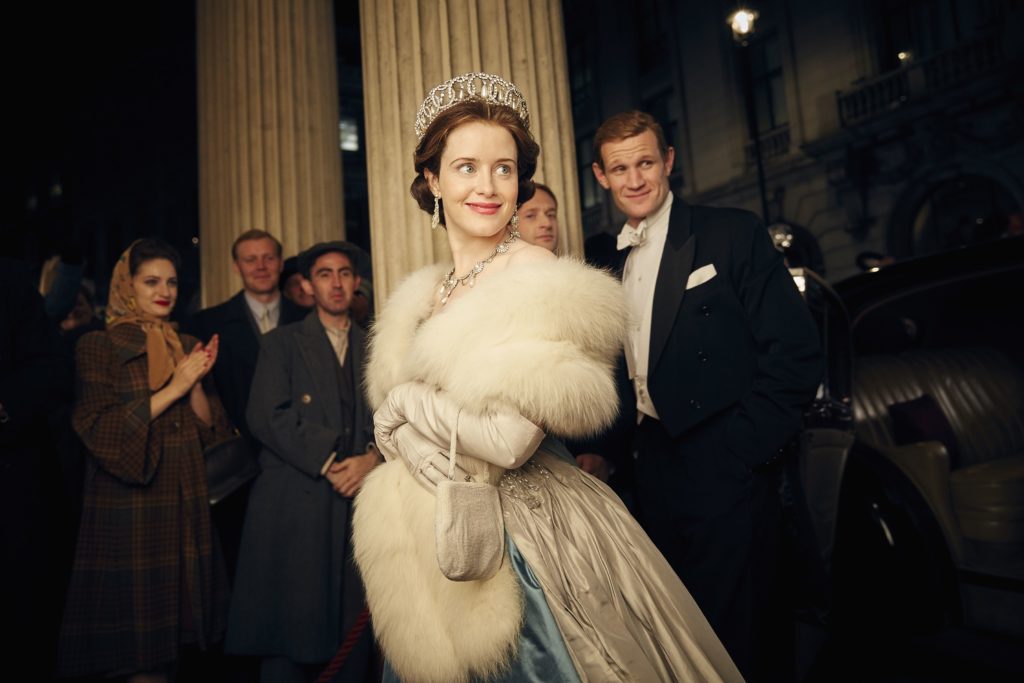
Photo by Robert Viglasky/Netflix/REX/Shutterstock Claire Foy, Matt Smith ‘The Crown’ TV Series – 2016
In the meantime, since I am a huge fan of the Victorian era in jewelry and the impact it continued to make on the pieces of various decades, we have chosen eight styles that defined this time frame as we begin to launch our coverage of the first eight episodes of the series.
Divided into three periods, The Victorian era was longest age in jewelry, spanning Queen Victoria’s reign, from 1837-1901. The Romantic Period covers the earlier years when the young queen married her Prince, Albert. Sentimental motifs were plentiful and jewelry designs were steeped in meaning. It was an innocent time full of youthful passion. What made this time even more influential was that it marked a major change in the way jewelry was produced and worn, due to the industrial revolution and the discovery of the diamond mines in South Africa. Women of all social status were now able to wear fine diamond jewelry pieces for day and for evening.
During the Grand Period, the two decades when the Queen mourned the death of Prince Albert, the style of jewelry changed dramatically. Dark, somber jewels were the vogue. Mourning and memorial lockets and rings with inscriptions and dark colored stones of Whitby jet, onyx and deep red Bohemian garnets came into vogue. During this time, the popularity of the Grand Tour, which took the well-heeled British to Greece and Italy and brought Revivalist jewelry back with Etruscan, Greek and Renaissance influences. This period was also representative of the Queen’s love for Scottish jewelry.
When Queen Victoria came out of mourning in the later Aesthetic Period, it reflected a return to lightheartedness with symbols of luck, good fortune and naturalistic forms and motifs. The jewelry of this period created an entire iconography that we still see today.
SNAKE JEWELRY
Snake motifs are one of the earliest historical and mythological symbols that had significance in almost every culture. From Adam and Eve to Cleopatra, snakes have been associated with diverse meanings from good to evil. In 1839, when Prince Albert proposed to Queen Victorian with a snake ring signifying everlasting love for eternity with an emerald, her birthstone, centered in its head, it became one of the most iconic Victorian motifs in jewelry. Queen Victoria’s ring set a trend throughout England, and eventually throughout Europe, for a range of snake rings, coil-style flexible necklaces and bracelets with gem-set heads, as well snake brooches, cuffs, bangles, and hoop and drop earrings that featured a snake slinking around a gemstone. The serpent motif continued into the Art Nouveau period as well as becoming a motif for renowned houses like Bulgari in mid 20th century. Today, they are still slinking around and seem to be a symbol that will never go out of favor.
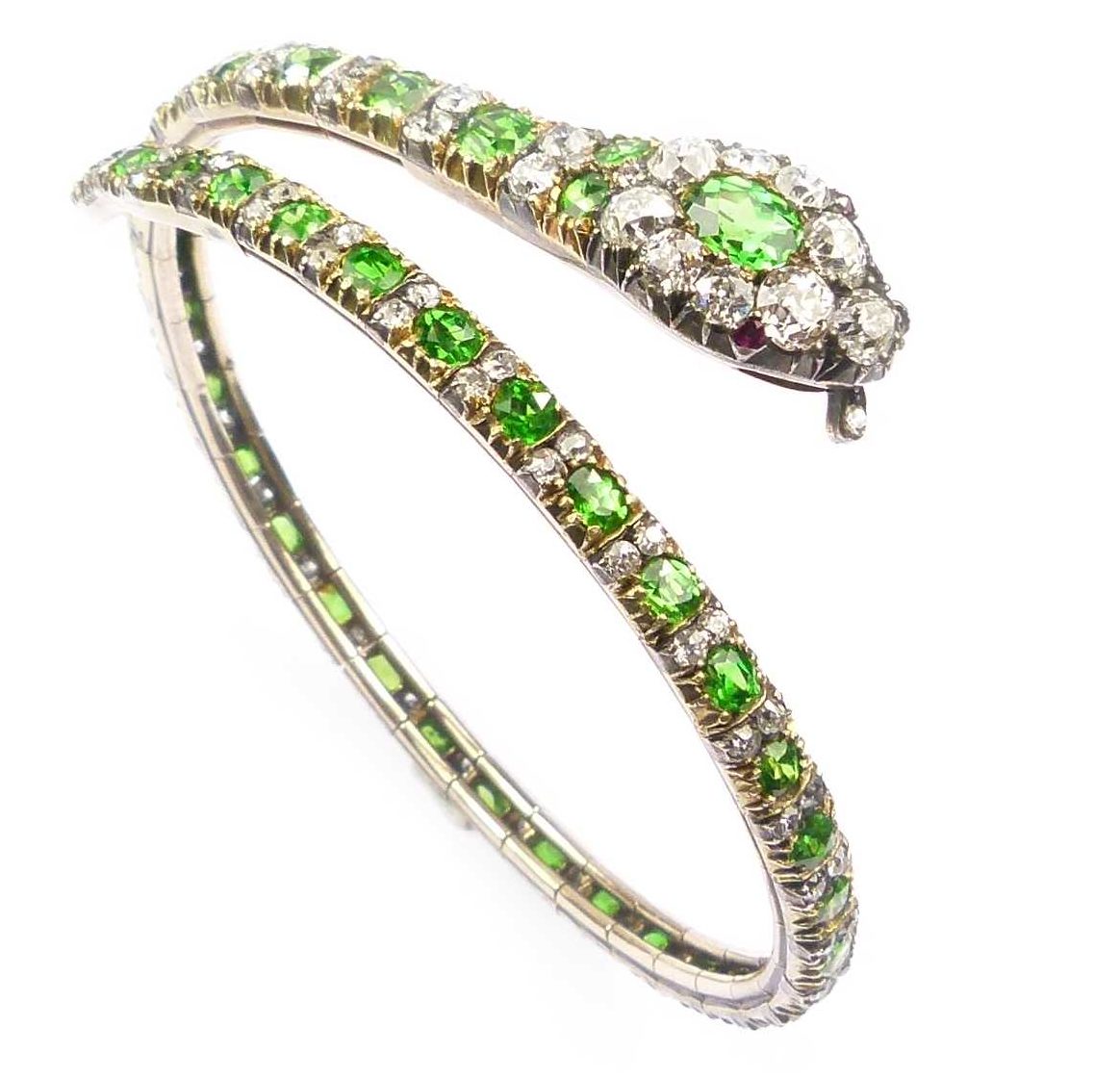
S.J. Phillips hematoid garnet and diamond late Victorian snake bracelet
HEART JEWELRY
Hearts, which became quite popular in Georgian times continued on into Victorian jewelry. There is a whole language of symbols associated with hearts but all are variations on the most iconic symbol of love and romance. One heart symbol that became popular in Victorian jewelry is the witch’s heart, implying that the giver had become bewitched to fall in love with the recipient. English Victorian pendants and brooches displayed a hand holding out a heart as a gesture of affection. Other heart styles include entwined hearts with connotations of “continuous, everlasting love” similar to the infinity sign. Double hearts set side-by-side signify two hearts together as one while double hearts with a crown were associated with fidelity reigning over a marriage. Single crowned hearts mean “ruler of my heart.” A heart with a flame on top symbolizes burning with passion. An arrow piecing a heart referred to cupid shooting his dart to make the recipient fall in love. And a heart with a key motif contained several meanings, such as “I have the key to your heart” or “you are the key to my heart.” Victorian jewelry is nothing if not romantic, with many other love-inspired heart designs.
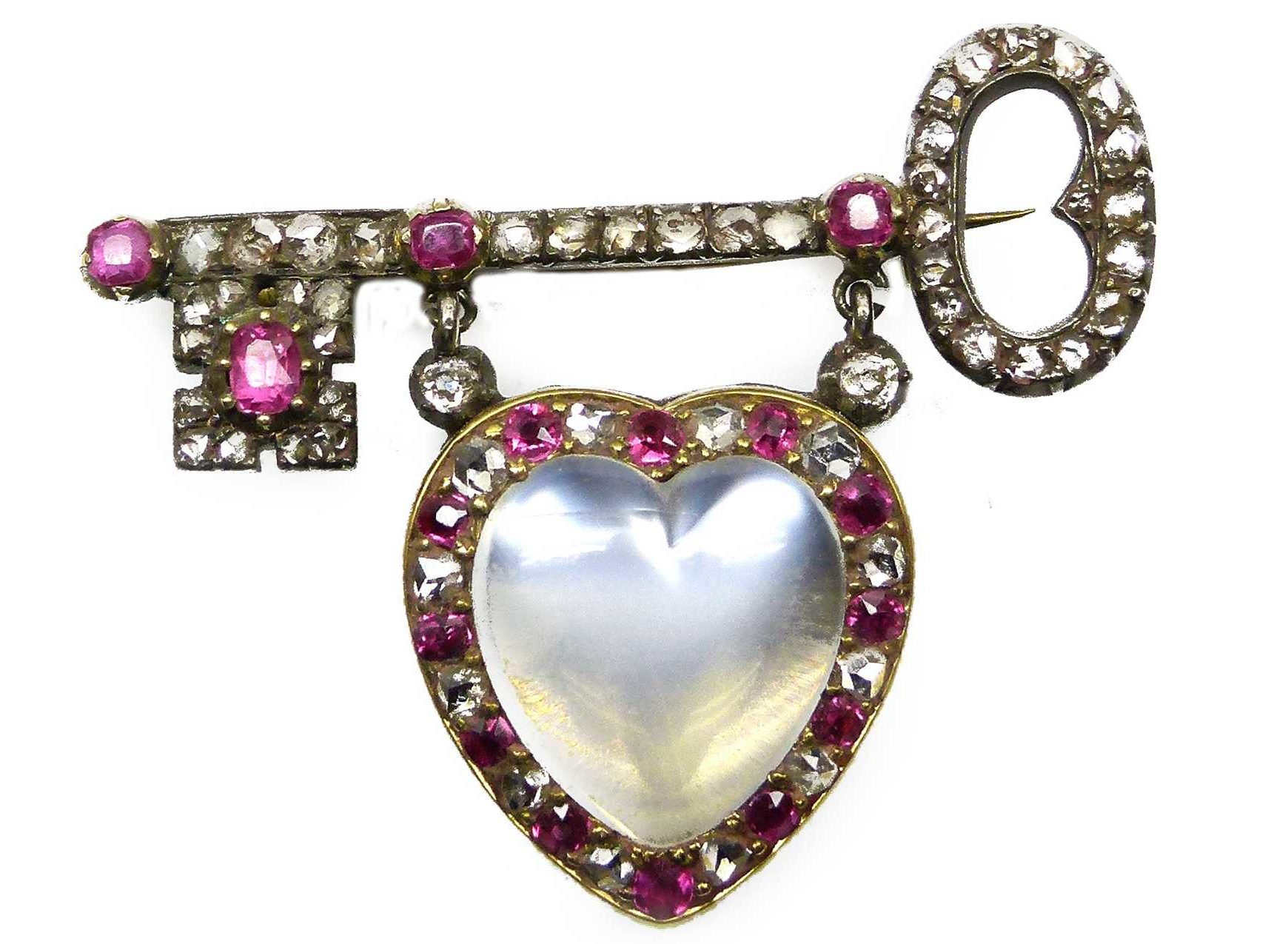
S.J. Phillips ruby,diamond and moonstone key and heart brooch
GRAND TOUR JEWELRY
Popularity also reigned in the souvenir of exotic pieces collected on The Grand Tour. The most popular are Italian. Pietra Dura micro-mosaic jewelry, crafted out of colored gemstones or glass often depicted famed Italian destinations. Also popular are coral and shell cameos. Rings, bracelets and brooches feature the word Souvenir in both English and Italian. Others spell out Roma on the back of a picturesque micro-mosaics crafted into images of the city.
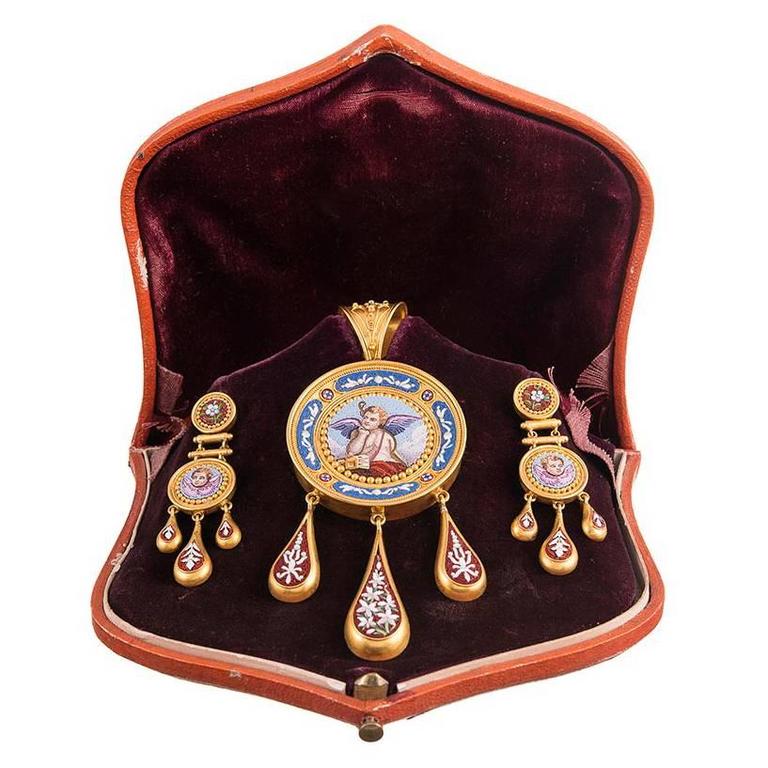
Fourtane’s Micro-Mosaic demi-parure of earrings and pendant
REVIVALIST JEWELRY
Revisited archeological, Etruscan, Renaissance and Egyptian pieces. Jewelers such as Italian masters Castellani and Giuliano were famed for their revivalist styles during this period and worked in gold, wirework, granulation, millegrain and various other techniques. They often used vivid gemstones contrasted against the rich buttery feeling of gold and highlighted the designs with a painterly palette of contrasting or tonal enameling.
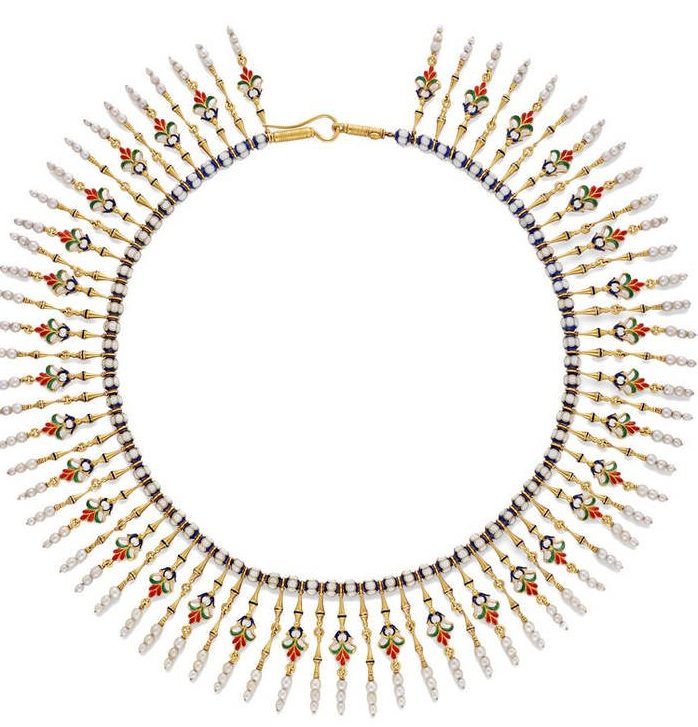
Bentley & Skinner Giuliano Fringe Necklace
VICTORIAN LOCKETS
Sentimentality and tokens of love and loss are characteristic of Victorian jewelry. Lockets are common in all three in different moods and materials. The secret compartments that could hold photos, messages or locks of a loved one’s hair in life or after death were all part of the popularity of this category of jewelry. When Queen Victoria went into mourning, lockets designed in remembrance of lost loved ones became the height of fashion. The symbolism that reigned over the entire Victorian period includes the meanings of gemstones too. Turquoise symbolizes forget-me not. Lockets are also embellished with diamond horseshoes for luck, buckles for holding tightly onto a loved one, and anchors for hope and safe passage home for sailors. Lockets are also often chased and engraved with names and dates representing births, marriages, deaths, and other important occasions.
- Shrubsole’s Victorian corset locket with turquoise forget me nots
- Bentley & Skinner’s Blue enamel and pearl star locket
FLORAL JEWELRY
Books and pamphlets published in the Victorian era describe the language of flowers, offering meanings for a wide range of botanicals. The jewelers of the day use floral and foliate motifs to add extra meaning to antique rings, lockets, brooches and earrings. The main floral motifs during this time period include forget-me-nots for remembrance and pansies for “think of me” (from pensee in French, which means think). There were tulips for a declaration of love, ivy leaves for fidelity, and orange blossoms for everlasting love. There was meaning for almost every bloom. These eloquent flowers are added to lockets, charms, rings and brooches. This Victorian tradition continued on to the 20th and 21st centuries with every renowned jewelry house creating their versions of garden variety or exotic botanicals to add beauty and meaning to jewelry that speaks from the heart.
- Kentshire forget me not earrings
- Bentley & Skinner Pansy Ring
SCOTTISH JEWELRY is also referred to as “pebble” jewelry, which originated in Scotland but was also produced in England. Highland themes predominated the motifs of these colorful and lively pieces with inlays of gemstones in mosaic like patterns. On Queen Victoria presented gifts from the Highlands of jewelry for family, friends and her staff. Rendered in silver, motifs ranged from Celtic knot to naturalistic forms set with stones such as agate, amethyst, rock crystal, granite, cairngorm, river pearls to form the multi-colored motifs. Heart shaped brooches, usually surmounted by a crown, thistle or fleur-de-lis, were known as “Luckenbooth“ hearts, named for the small lockable booths in St. Giles’s Kirk in Edinburgh where they were first sold. They were worn as love tokens throughout Victorian times.
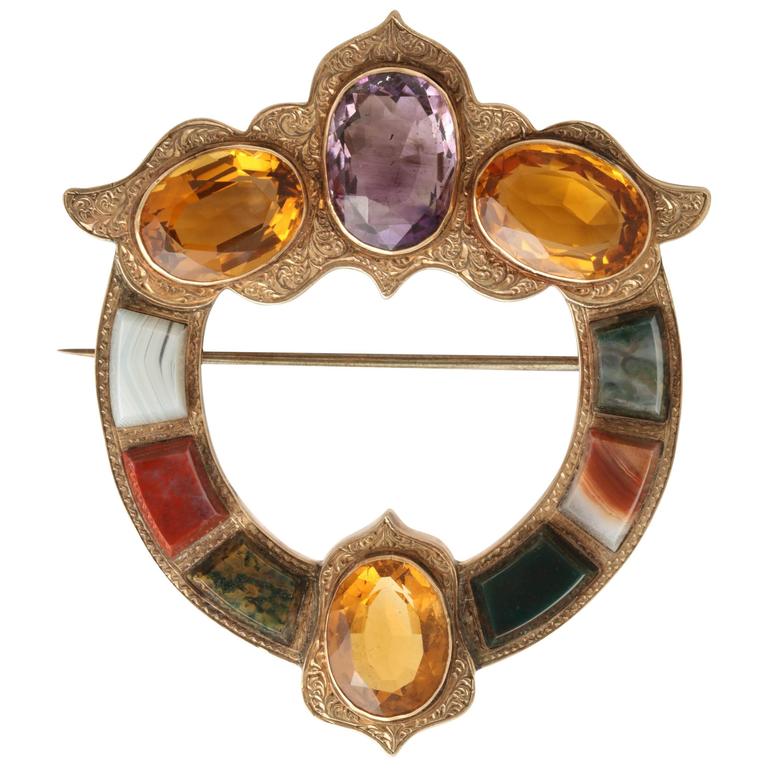
Prather Beeland Scottish Brooch
DIAMOND JEWELRY
Due to advanced cutting techniques and the ability to achieve whiter stones, old mine and cushion cut diamonds, which were foil and closed back in the Georgian era, were designed with new opened back settings. This allowed for more light to shine through, creating more sparkle around the stones. Women of all social status wore diamonds, whether they are in small double drop earrings for day or longer pendant styles earrings for evening. Diamond and natural pearl fringe necklaces were also a major statement during Victorian times as were swag style necklaces and bracelets and brooches with a variety of motifs set with different size diamonds.
- Kentshire diamond and pearl Victorian Fringe Necklace
- Bentley & Skinner’s Diamond Victorian pendant earrings
Similar Articles
The Ring in the Film Rules Don’t Apply goes from Screen to Street
Seven Meaningful Motifs in Victorian Jewelry (As Popular Today As They Were Then)
The Jewelry Worn in Costume Designer Janet Patterson’s period drama
Pat Novissimo offers up her expertise on Georgian Jewelry

